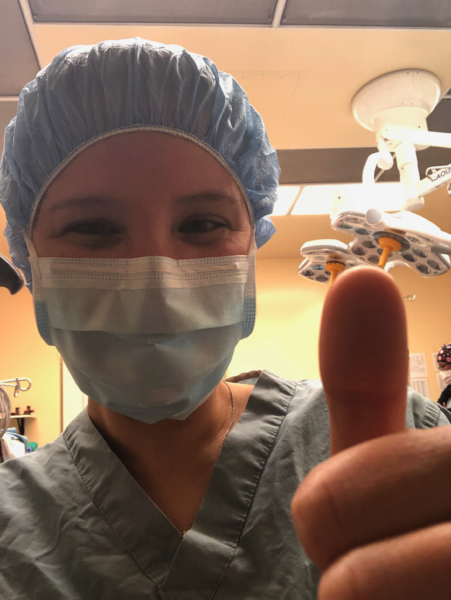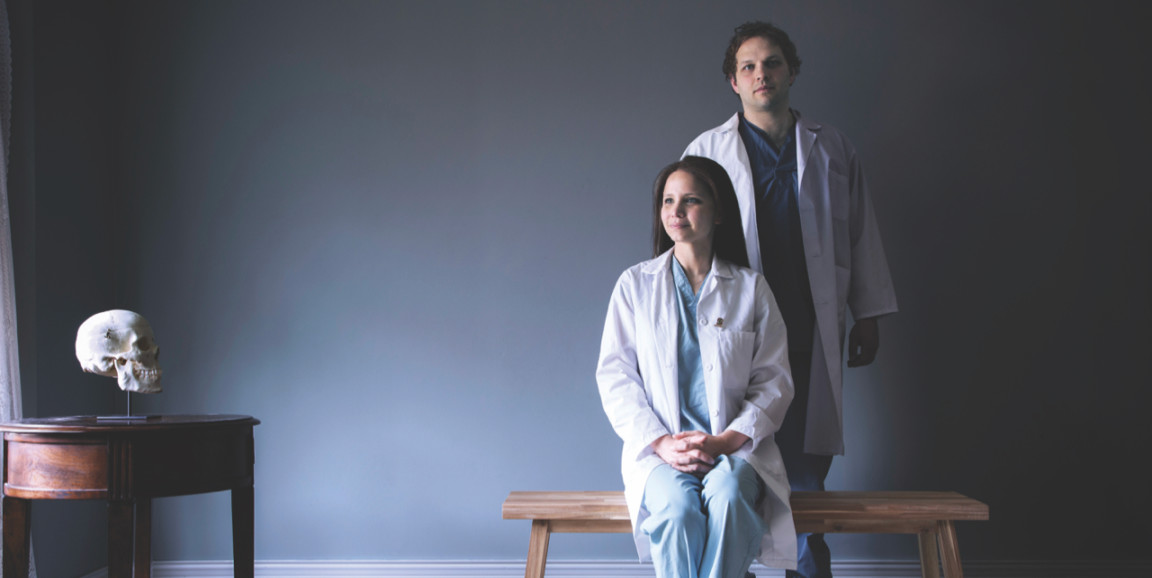It was 8:30 on a Friday morning in May when I texted Canadian neurosurgeon Teresa Purzner, MD, PhD, with an urgent request. We were finalizing my story for the latest issue of Stanford Medicine magazine, and I needed her to answer a couple of last minute questions. She replied less than a minute later to explain that she was about to scrub in for surgery and I resigned myself to a several-hour wait before getting the answers I needed.
But then, in what I've come to realize is typical Teresa fashion, she got the job done -- texting me the answers in a rapid-fire list before heading into the operating room. She ended our conversation by sending me a smiling, thumbs-up selfie in scrubs (below) that made me grin and reflect, yet again, what a remarkable person she is.

As I described in my story, Purzner's ability to multitask, think outside the box and to not accept what seems dictated by the status quo led her and her husband, Jamie Purzner, MD, PhD, to step away (temporarily) from their neurosurgical residencies at the University of Toronto in 2012. They left to join the Stanford laboratory of Matthew Scott, PhD, to understand at the most basic level the cause of a common pediatric brain tumor called medulloblastoma. Scott describes their decision as "totally unbelievable, and unprecedented, for people with their training and skill."
I described their journey in my article:
Their unconventional career rewind has been uncommonly successful. They identified a potential new drug treatment for the disease, and with support from Stanford SPARK -- a program launched in 2006 to advance promising discoveries from the lab to the clinic -- Teresa Purzner went on to test it in mice and to coordinate the launch of a phase-1 clinical trial that recently began enrolling patients.
Now, they have returned to Canada to finish their residencies.
"There are 101 valid reasons to not do what we did, and 100 more reasons why we should have failed once we decided to do it," Teresa, who is now a chief resident, told me. "It is just such a huge relief to get to this point and know that I did what I came to do."
Top photo by Ethan Hill; Center courtesy of Teresa Purzner






